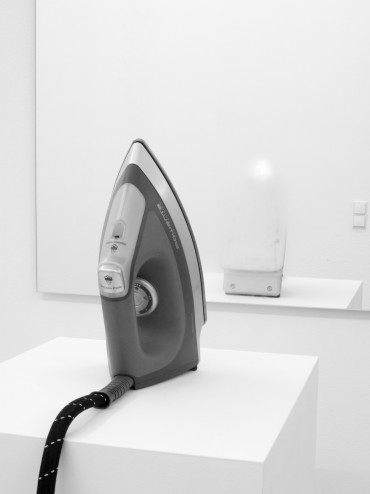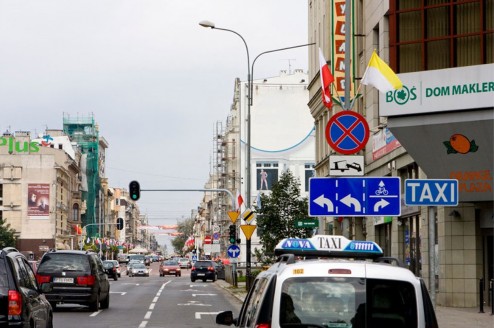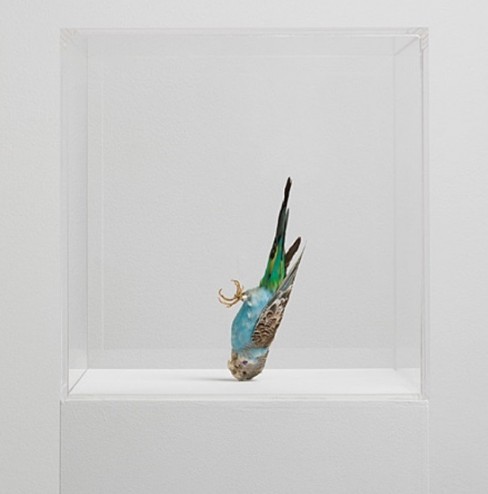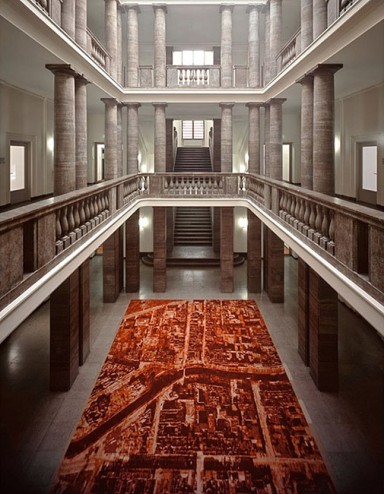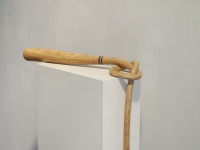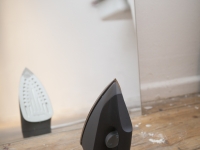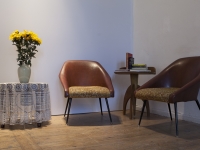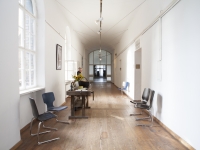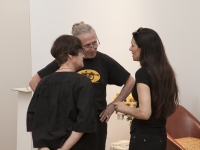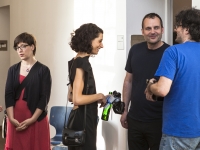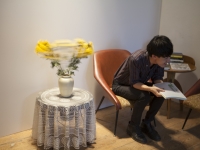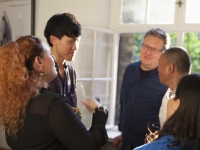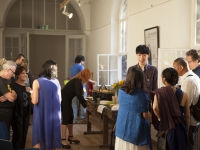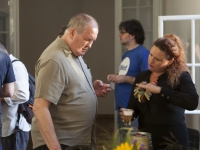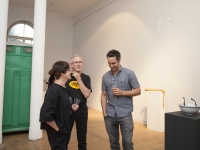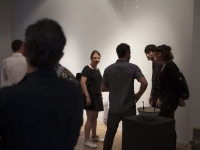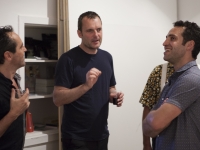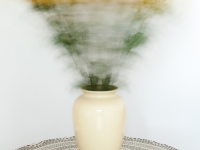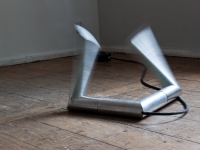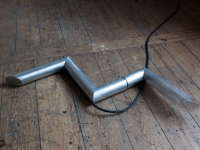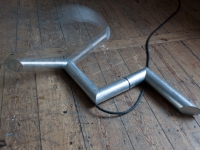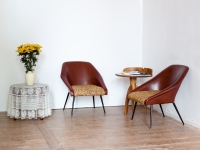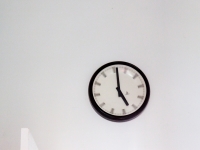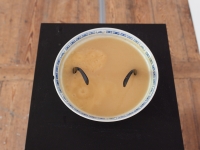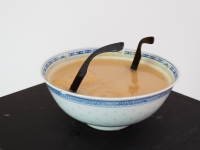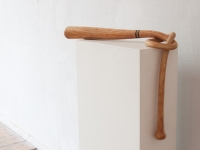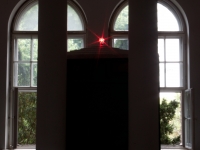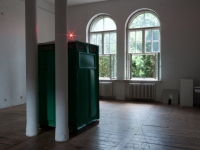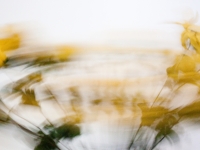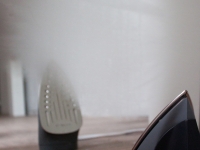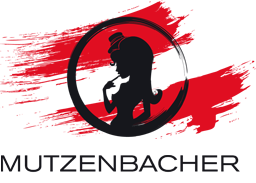ab-surdus
Via Lewandowsky: a case-study
Curated by Isabel de Sena
In collaboration with the Ivo Wessel Collection
OPENING SAT 9 AUG / 19.00 – 22.00
Exhibition 10 Aug – 7 Sep
Kunstquartier Bethanien
Mariannenplatz 2, Kreuzberg
Thu – Sun / 13.00 – 19.00
Or by appointment: contact Isabel de Sena
Lecture / artist talk: Thu 21 Aug, 20.00
with Isabel de Sena & Via Lewandowsky
CURATORIAL STATEMENT
When the Museum Boijmans van Beuningen announced it would buy Neo-Dada and Fluxus artist Wim T. Schippers’ absurdist installation, Peanut-Butter Floor (1964) in 2010, it made front page in the context of the austerity cuts that were dominating public discourse at the time. For many it was welcome and much longed-for ‘proof’ that contemporary art was nothing more than an absurd leftist hobby, meaningless for society at large. Indeed, on what exactly did the museum really spend thousands of euros, while families struggled to provide their children with proper health-care? Peanut-butter! The opposition, consisting mainly of artists and the art-loving public, was rather unsuccessful in defending the value and legitimacy of making such a purchase, and to this day Peanut-Butter Floor retains a bad after-taste.
This recent episode in the public debate about arts and cultural policy demonstrates how tightly bound absurdity is with questions about what constitutes meaning and meaninglessness, as well as the related issue of what the value of art is today. Clearly, there is a need to grasp and articulate why and how such ‘absurd’ art may be significant. This exhibition is part of an ongoing research into this issue, led by Isabel de Sena (Vigo, 1982). As such, it should be viewed as a study-room, a visceral place in which to ponder on this phenomenon, devoid of any intent to arrive at clear-cut answers.
Within this enquiry, De Sena has found a compelling case-study in the work of Berlin-based artist, Via Lewandowsky (Dresden, 1963). Though his work has been repeatedly characterized as absurd, this will be the
‘ab-surdus’, the title of this exhibition, refers to the etymological origin of the word ‘absurd’, meaning “incongruous, dissonant, out of tune”; from ab, “away from, out” and surdus “silent, deaf, dull-sounding”. Focusing the selection on Lewandowsky’s sound-works, assembled here together for the first time, this exhibition further demarcates its scope by concentrating on the temporal element of absurdity – one that is decisive in appreciating absurdity as inextricably tied to the progression and finality of life, as well as to the process-based nature of thought.
* Special thanks to Ivo Wessel for his enthusiasm and kind collaboration in realizing this exhibition and to Via Lewandowsky for his sympathetic support of this research and for his open generosity in lending it full autonomy.
ABOUT THE ARTIST
Via Lewandowsky (Dresden, 1963) studied at the Hochschule für Bildende Künste Dresden from 1982 until 1987. Starting in 1985, he organised subversive performances together with the avant-guarde group, Autoperforationsartisten, that undermined the Communist art authorities of Eastern Germany (GDR). In 1989, shortly before the fall of the Berlin wall, he left the GDR and subsequently moved to West Berlin. Since then, he has travelled extensively and has lived for extended periods in New York, Rome, Peking and Canada. He now resides in Berlin.
Via Lewandowsky works in diverse artistic media. He is most familiar for his sculptural-installation works and exhibition scenographies with architectonic influences such as Brain and Thinking: Cosmos in Mind (2000), displayed at the German Hygiene Museum in Dresden. By the 1990s his work had already begun to incorporate elements of Sound Art; this has since become an important and integral part of much of his performance work. (e.g. Oh You Green Nine (2011), Applause (2008).
Content, not form, is the unifying theme in Via Lewandowsky’s body of work. Dominant recurring themes include: misunderstanding as failure of communication and the deformation and deconstruction of meaning. Another hallmark of Via’s work is that ideas are represented as process rather than completion. The artist is neither looking for something conclusive, a definitive ending, nor complete destruction but rather for the constructive moment within a process of destruction. This identification of the in-between moment is highlighted by the work’s inherently satirical content that does not try to elicit pathos from its audience. Lewandowsky’s work does not confer objects with disrespect but rather admiration and amazement.
His working method and the effectiveness of its artistic results are often characterized by opposites. Elements that are controlled, staged and constantly emerging also have spontaneous, unexpected, and thus lively qualities. Humoristic, seemingly light-hearted works viewed a second time contain gruesome, brutal moments that can turn the comedic into the disturbing. Examples include The Test Person Behaved Extraordinarily Calmly (2007) and Street Life (2010).
His preference for tragicomedy, absurdity and paradox as well as the Sisyphean drama of continuous repetition and futility of action link Lewandowsky’s art with Dadaism, Surrealism and Fluxus. The ironic breaks with everyday life, the intrusion of the strange into the familiar, often domestic realm take place in his work by using the detritus of the German bourgeoisie: cuckoo clocks, DIY garden sheds, parakeets or bureaucracy.
His interest in a nation’s construction of identity exposes a political dimension in his work. Lewandowsky’s installations in public spaces confirm this, as do his performances, which create an awareness of the structures of historiography. In 2009 his contribution to the 20th anniversary of the Monday Demonstrations in Leipzig took the form of a confetti parade. Canons were fired at the participants with the fusillades consisting of confetti made from miniature business cards bearing the code names and professions of thousands of the Stasi’s domestic spies. Information for the business cards was acquired from documentation at the Birthler office in Leipzig.
Via Lewandowsky’s public works of art cannot be reduced to any obvious political element. From Behind (2006), in the collection of the Kemper Art Museum in St. Louis, Missouri, plays with absurdity and puzzle of form and content. As with many of Lewandowsky’s works, the title points at the work’s inherent double entendre and hints at bigotry, thereby increasing its effect on the viewer.

From Behind (Doggy Style), 2006.
A work installed at a public site central to Germany history in Berlin is Red Carpet (2003). Laid out in the entrance hall of the Bendler Block, this oversized carpet, when viewed from above, shows a war-torn Berlin and ironically refers to the military term carpet bombing. The irony is heightened by the choice of location, as the Bendler Block is currently the home of the Federal Ministry of Defense. Red Carpet overlaps various layers of comprehension and the conscious aim of misguiding his audience by constructing unclear narrative threads are characteristic qualities of Lewandowsky’s work.
ABOUT THE CURATOR
Isabel de Sena (Vigo, 1982) is currently completing her Research Master in Arts and Culture at Leiden University, The Netherlands and is the newly appointed curator/researcher and Collection/AiR coordinator at MOMENTUM Worldwide, Berlin. In 2013 she received her Bachelor’s degree in Art History (Hons.) from Leiden University, which she extended with the Honours College trajectory of Agency and Rhetoric in Art and Literature. Throughout her academic career she has focussed predominantly on the agency of art in relation to the theory of knowledge, most recently concentrating on the value of
The opening of the exhibition photo Gallery:
(photos by Markus Koppe)
Th exhibition photo Gallery:
(photos by Marina Belikova)
WARM THANKS FOR KIND SUPPORT IN REALIZING THIS EXHIBITION


 Back to Homepage
Back to Homepage

